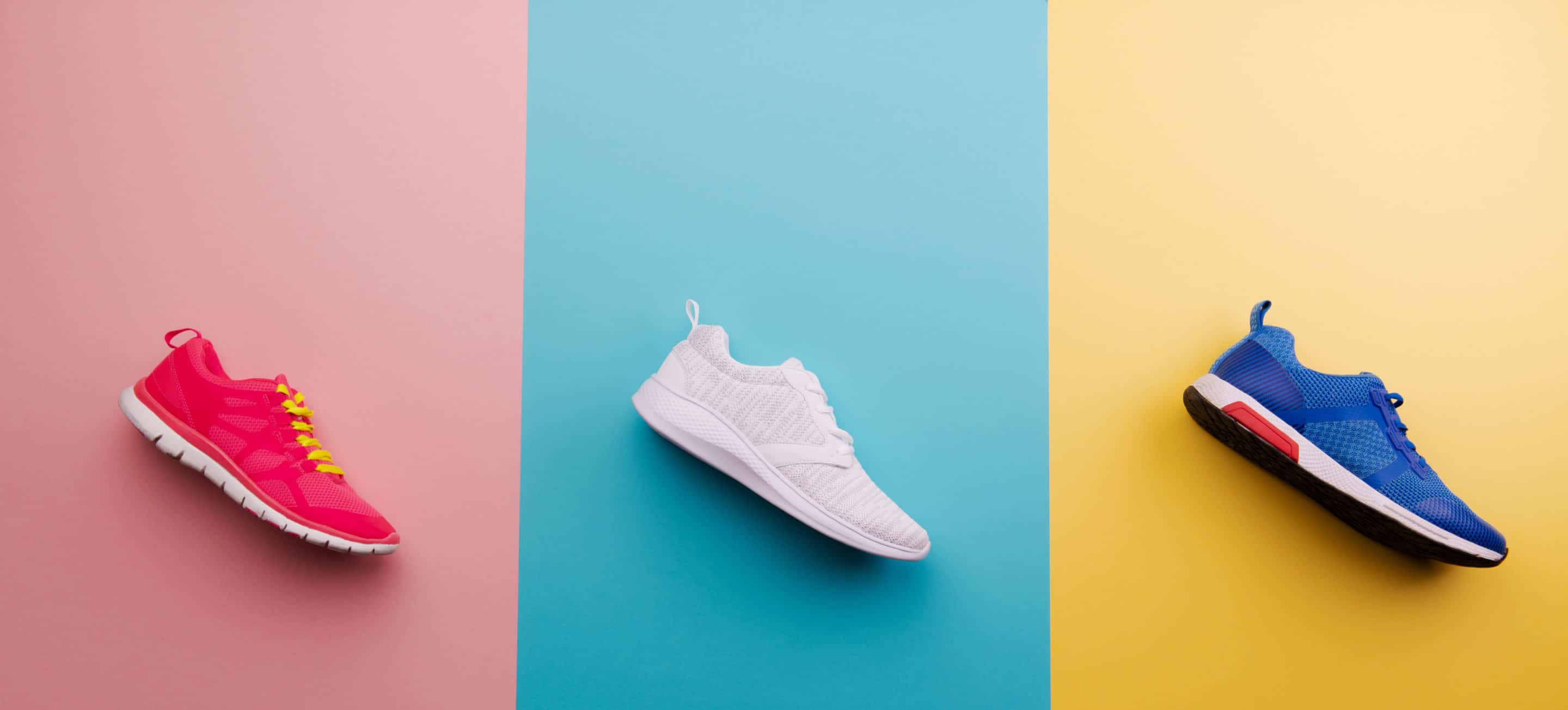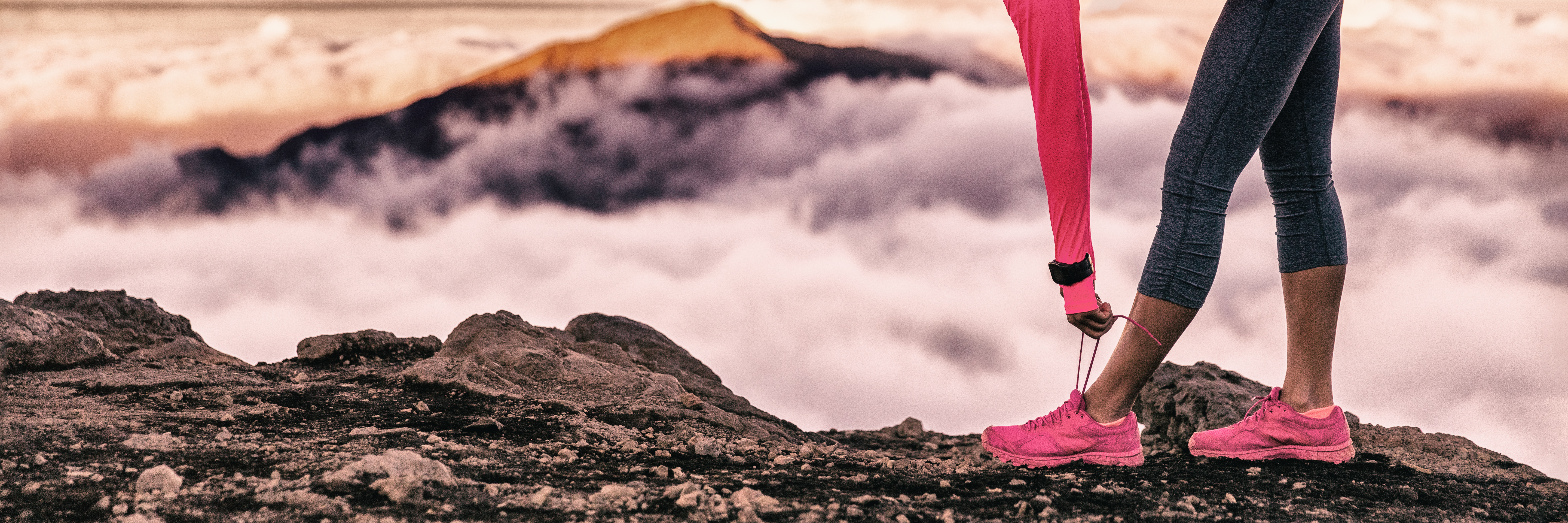Are Running Shoes (and Other Sport-Specific Shoes) Really Worth It?
It’s no surprise that running is one of the most popular physical activities in the country. There are lots of reasons to recommend it:
- It’s great exercise
- You can do it almost anywhere
- You can do it alone or with friends
- You don’t have to already be in great shape
- You don’t need years of experience to get the most out of it
- The financial barriers to entry are extremely low
But could those financial barriers to entry be even lower?
Lots of people, especially running beginners, wonder if they truly need to buy a pair of running shoes before they begin their new exercise journey. If you’re just starting out, or only going for short distances, shouldn’t those sneakers you already wear every day be sufficient?
Well … no, they probably aren’t. While it’s certainly not impossible to go out for a very occasional jog in non-specialized shoes, if you are planning to make running a regular part of your life, you should definitely get real running shoes.
Different Needs For Different Activities
Your feet are incredibly complex machines, and the way they operate (and the forces they must endure) can vary significantly depending on the activity. Your shoes should be optimized to support and protect the foot in the most appropriate ways based on the activities you plan to perform in them.
Wearing the wrong shoes for a physically demanding activity like running will at best impair your performance and cause you to wear out faster, and at worst lead to injury.
Some ways that running shoes are set apart from walking shoes or other casual athletic footwear:
- Cushioning. Running shoes tend to have greater levels of cushioning under the heels and arches to help you deal with the repetitive impacts. The impact force of landing can easily be 3 times the runner’s body weight (or more) with every single step.
- Weight. Running shoes are designed to be as light as possible without sacrificing cushioning or support. You might not think half a pound per foot would make much difference, but over the course of a few miles the excess weight can start to really slow you down and put your feet and legs at greater risk.
Getting the Right Fit For Your Stride
One other thing you may notice with running shoes is that there are a lot of different options. There is much more variation in running shoes than with walking or casual shoes.
That’s because the vast majority of people walk approximately the same way (heel strike, some pronation, toe off), and walking itself is a relatively low-stress activity. Conversely, there is much more variation in running styles (heel strike, midfoot strike, stride length, underpronation, neutral pronation, overpronation, etc.), and that’s reflected in the greater variety of features and styles available for running shoes.
The trick is figuring out which features you actually need. A “great running shoe” isn’t necessarily going to be great for you if it doesn’t have what you specifically need for your stride. For example:
- How much heel-to-toe drop do you need? (Higher is often better for heel strikers or those who deal with Achilles tendinitis; lower might be better for midfoot or forefoot strikers.)
- Do you need stability/motion-control shoes? (People who excessively overpronate may benefit from them.)
If you have no idea how to even begin to answer these questions, don’t panic! If you go to a shoe store that specializes in running and athletic shoes—like Brown’s Shoe Fit Co.—talk to an associate. They should be able to point you in the right direction. You can also give us a call—we’re happy to provide a gait analysis.
Other Sports
The same logic about runners needing running shoes applies to practitioners of other sports, too.
Consider basketball, the most popular team sport here in Central Kansas. Basketball shoes look a lot different from running shoes. They’re much bulkier, much heavier, and often have much higher collars around the ankle.
Basketball shoes need even more cushioning than running shoes, because you’re not only running but also jumping, and can land with a ton of force. The high tops also provide better protection against ankle injuries, which are a bigger problem in basketball (due to all the jumping and pivoting) than straight-ahead running. While all this extra bulk comes at the cost of adding more weight to the shoe, that tradeoff is generally worth it for basketball players.
 Specific Running Shoes Recommendations
Specific Running Shoes Recommendations
As we previously mentioned, Brown’s Shoe Fit Co. is a great choice for athletic shoe shopping. They specialize in all kinds of footwear and their associates are trained to measure your feet, explain the different features and technology available, and help you find a good fit. They have locations in McPherson, Hutchinson, and Salina.
Some specific shoe brands that we recommend include:
- Hoka. These shoes are especially well known for their durability and having a large sole and lot of cushioning and support.
- Brooks. Another strong, established brand. Often ideal for runners with wider feet.
- Asics. Another great option, especially for those with narrower feet or are looking for more traditional (but still excellent) shoes.
But of course, remember that just getting high quality shoes from a great brand isn’t enough—they also need to be the right fit for your feet and your running style. That’s why getting specialized advice from either us or a specialty retailer like Brown’s Shoe Fit Co. is so valuable, and highly encouraged as a much better alternative than buying online.
When Should I Replace My Running Shoes?
Athletic shoes, even the highest quality ones, won’t last forever. Running, jumping, and playing sports is stressful, and over time the weight and impacts will cause the midsoles to compress, the cushioning to wear out, and the shoes to become far less efficient at protecting and supporting your feet.
Regularly check your shoes for signs of damage or wear, but understand that worn out shoes may not always look worn out from the outside. The most important thing to keep track of is how you feel while wearing them. If your shoes suddenly don’t quite feel right, or you find that runs or games you used to get through easily are now causing you foot or leg pain, it’s probably time to make a change.
As a general rule of thumb, running shoes typically need to be replaced after about 300 to 500 miles logged. This is not a hard and fast rule, though, and depends on things like your weight, your form, your running surface, and the quality of the shoes themselves.
Your Foot and Ankle Sports Medicine Experts
A great pair of sport-specific shoes can make a huge difference for runners and athletes at any age, and any ability level. But they aren’t a guarantee that you’ll never suffer from any kind of foot-related pain or injury.
If new shoes aren’t enough to stop your feet or legs from aching, make sure you give the Community Foot Clinic of McPherson a call. We’ll take a close look at your feet and ankles and talk with you about your symptoms to identify and treat any current injuries, as well as address underlying causes. Our sports medicine services include laser treatment to provide swift pain relief and healing, and custom orthotics to correct biomechanical flaws and add more cushioning, support, and stability to your stride.
Dial (620) 241-3313, or request an appointment online today!
© Community Foot Clinic of McPherson. All Rights Reserved.
Privacy Policy | Terms & Conditions
Web Design by CP Solutions
Marketed by VMD Services


 Specific Running Shoes Recommendations
Specific Running Shoes Recommendations